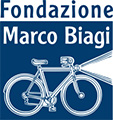
Settore disciplinare: SECS-P/01, SECS-P/02
Borsa di studio: Sì
Curriculum Vitae: download
Email: filippo.ferrarini@unimore.it
Progetto di ricerca
Regional competitiveness, HRM practices and firm innovation at European level.
Competitiveness is a complex concept, which is influenced by a multiplicity of factors. At macro level (i.e. regions) the determinants are the socio-economic territorial characteristics, while at company level one of the factors is the capability of the firm to sustain and enhance its innovative capacity through which it can stay competitive on the market. The aim of the current study is on the one hand, the analysis of territorial competitiveness and specifically of regional competitiveness in Europe; on the other hand, it goes deeper by considering at European level, the antecedents of firm innovation, in particular human resource management practices, collaborative research and development digital technologies in the workplace. In this framework the present thesis is intended to address these topics in three different chapters.
The first chapter, by using data coming from the EU Regional Competitiveness Index (RCI) 2019, makes a comparative assessment of regional competitiveness at European level through a Multiple Criteria Decision Making (MCDM) method, which offers a new perspective on complex concepts such as regional competitiveness, which are difficult to determine and measure. The current analysis on the one hand, integrates and extends the current literature on the methods that are relevant for measuring regional competitiveness; on the other hand, through a comparative approach it offers a fresh perspective on regional competitiveness at European level that could be useful for policy-makers addressing territorial disparities.
The second chapter, by using data coming from the European Company Survey (ECS) 2019, analyses though a mediation model, how human resource management practices may enhance collaborative research and development between firms and how this in turs, influences (and enhances) the probability to make innovations by the companies involved in the process. This part offers some interesting implications for managers on how increasing the innovative capacity of companies by investing in those practices that promote collaborative innovations. At the same time, the study tries to provide empirical answer to the relationship between practices and collaborative innovation, a topic which is currently debated but has been mainly addressed by qualitative studies so far.
The third chapter, by using the ECS dataset and by using a moderation model, drives the attention on how human resource management practices have different effects on different kinds of radical innovations (i.e. product and process innovation), by also taking into account the level of technological context complexity in the workplace. This study extends the current literature on the effects of human resource practices on radical innovation, which is currently a gap in the literature. Moreover, it considers a “hot” and debated topic, which is how digital technologies shape and influence the determinants in the workplace, as well as firm innovation itself.

